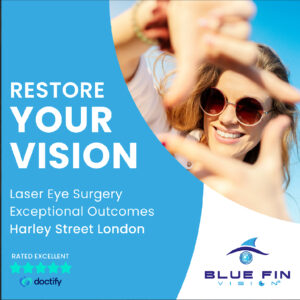Refractive Lens Exchange: A Breakthrough in Correcting Vision for All Ages
Refractive Lens Exchange (RLE) is becoming an increasingly popular option for people looking to eliminate their dependence on corrective eyewear, such as glasses or contact lenses. Unlike laser-based surgeries like LASIK, RLE is especially beneficial for individuals who have high degrees of nearsightedness, farsightedness, or presbyopia, a Refractive lens exchange condition that typically affects people over the age of 40, making it difficult to focus on close objects.

One of the primary advantages of RLE is its ability to treat a wide range of vision problems. For individuals with very high refractive errors or those who are not suitable candidates for LASIK due to thin or irregular corneas, RLE offers an alternative that can provide lasting vision correction. Furthermore, because RLE involves the removal of the natural lens and the implantation of an artificial intraocular lens (IOL), it offers the potential to address both vision issues and the natural aging process of the eye.
The IOLs used in RLE come in a variety of types, allowing for customization based on the patient’s specific visual needs. For instance, monofocal lenses are designed to correct vision at one specific distance—usually for either distance or near vision—while multifocal lenses provide multiple focusing points for near, intermediate, and far vision, reducing the need for glasses after surgery. Accommodating IOLs also mimic the natural focusing ability of the eye, providing patients with clear vision at different distances without the need for additional corrective eyewear.
While RLE is effective for a wide range of patients, it is particularly beneficial for those over the age of 40 who are experiencing presbyopia. This age-related condition occurs when the eye’s natural lens begins to lose its ability to change shape, making it harder to focus on nearby objects. By replacing the aging lens with a new, artificial IOL, RLE can restore a more youthful ability to focus on both near and distant objects, offering patients greater independence from reading glasses or bifocals.
The recovery process after RLE is typically swift. Since the surgery is minimally invasive, most patients can return to their normal activities within a few days, although full recovery and stabilization of vision may take several weeks. Post-operative care includes the use of prescribed eye drops to prevent infection and reduce inflammation, and patients are usually instructed to avoid rubbing their eyes or engaging in strenuous activities during the initial healing period. Regular follow-up visits with the surgeon are important to monitor the healing process and ensure that the desired visual outcomes are achieved.
While RLE is generally considered safe, as with any surgery, there are potential risks, including infection, retinal detachment, and issues with the IOL, such as dislocation or incorrect positioning. These complications are rare, and the majority of patients experience significant improvements in their vision following the procedure. Nonetheless, it’s important for patients to discuss the risks, benefits, and alternatives with their eye surgeon to determine whether RLE is the right choice for their unique situation.
In summary, Refractive Lens Exchange is an excellent option for people looking to improve their vision, particularly those who are not candidates for laser surgery or those experiencing age-related vision changes. With its ability to correct a wide range of refractive errors and offer long-lasting results, RLE continues to be a viable solution for many individuals seeking clearer vision and reduced reliance on corrective eyewear.